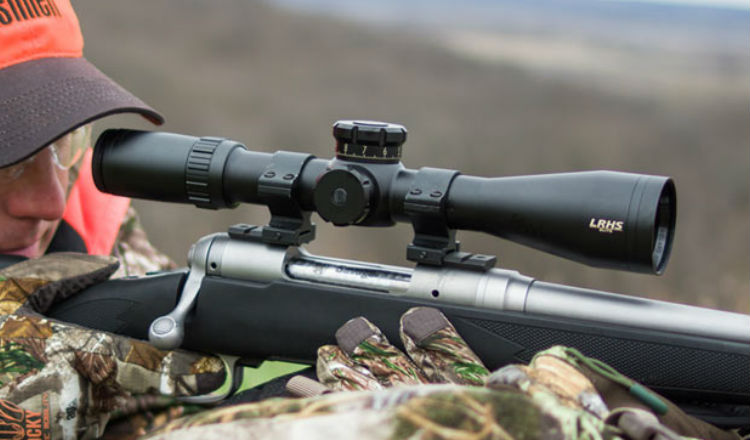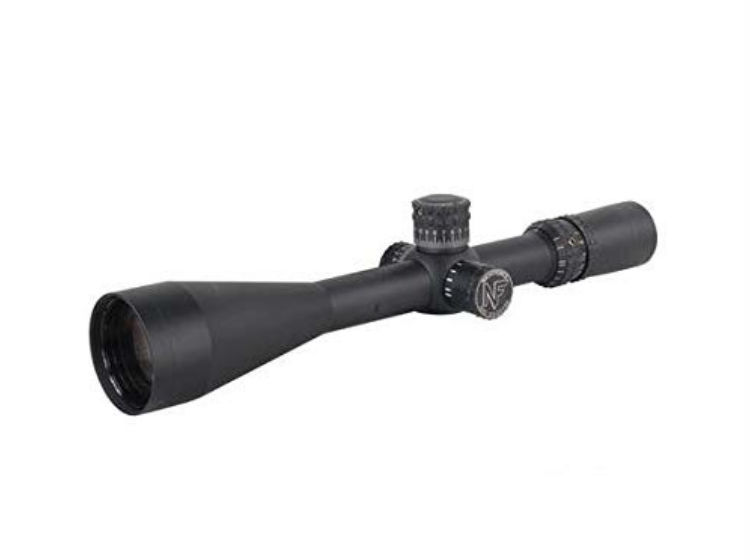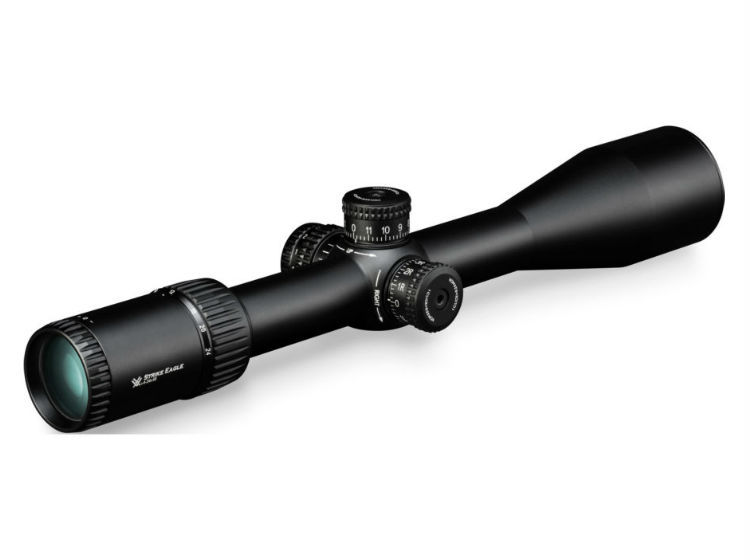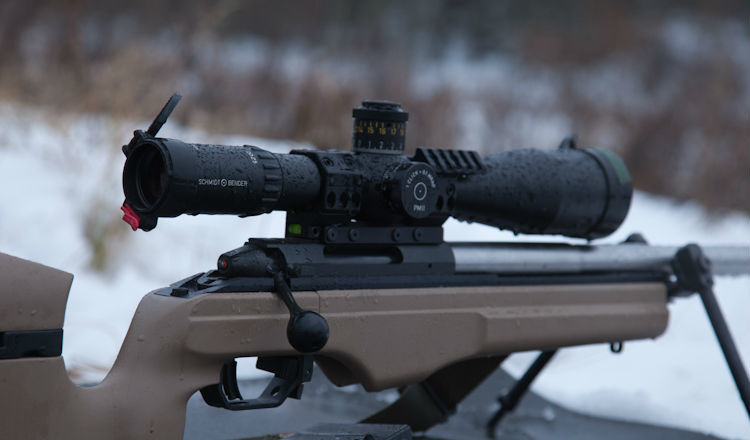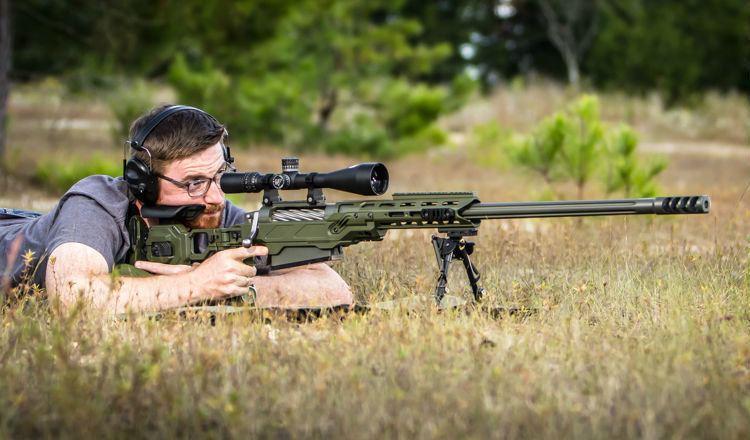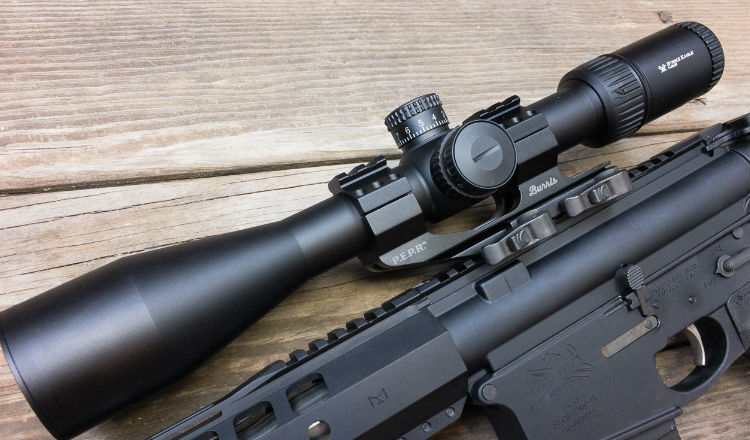We have already reviewed best red dot optics, which are perfect for close to medium range and extensions for them - best magnifiers, which extend red dot's effective range. But if you're looking for a long-range solution, capable of zooming up to 24-25 times - this is the guide you need.
We're going to review the best rifle scopes that have up to 25 time magnification.
Best rifle scopes money can buy
The 3 rifle scopes above cover every aspect of what people might look for when acquiring an optic. Schmidt & Bender scope is primarily used by professionals and it's price range won't be accessible to everyone, but we've made sure to include a budget option and a scope that's right in between.
In the future we're going to review more budget options that are accessible to others, but this buyer's guide is built specifically for professionals that need the absolute highest quality scopes out there.
Here's an overview of top 3 rifle scopes we've tested:
1. Schmidt & Bender PM II 5-25x56mm - the best rifle scope money can buy
Schmidt & Bender is one of the best known names in the rifle scope industry due to their overall product quality, durability and overall performance. The Schmidt & Bender PM II line was started back in 2003 and since then has become a riflescope of choice between dozen of US government agencies as well as US army.
The PM II model is primarily used by professionals and won't be the best option for people that are considering a mid-range scope, because this is definitely a top tier optic that comes with a high price tag. At the time of writing this review, the price is at $3,200 for 5-25x magnification option, while you're able to get some other options that are slightly cheaper or even more expensive.
Schmidt & Bender PM II 5-25x56 is the scope we're going to focus on today. Based on hundreds of optics we've been fortunate enough to use, this one has come on top in pretty much every aspect. In our eyes, it's the best rifle scope out there.
The optic comes with 34mm aluminum tube (excluding rail), 56mm objective, an overall scope length of 16 inches (roughly 40.5cm) and weighs a little over 2 pounds (1080g). This could be considered quite large for someone that hasn't used high-end scopes in the past, but looking at some of the other scopes that come out in the past decade - we would consider it a normal sized device.
PM II models have some of the best glass on the market, optics on the scope are able to provide clear, crisp and sharp images that have no visible distortion, allowing you to get the best shot placement. You're also able to select from 9 primary reticle options, their newest one (P4FL2-MOA) being the most popular and accessible at the moment. It's also the one we've tested.
We've tested the scope from a number of ranges, all the way from 25 yards (23 meters) to 1250 yards (1143 meters) and it was able to focus without absolutely any issues on any range that was selected. We've heard that the scope is able to go way beyond this number, nearly double of what we've tested it at, but what surprised us even more is how well the scope is able to focus at such close ranges. It isn't something that you would normally see on a high powered scope like this one.
The Schmidt & Bender PM II scope also comes with their standard 20 year limited warranty. The warranty covers all defects and damages that were not caused by improper handling or misuse while in your hands. Keep in mind that the warranty also becomes void once any modifications or repair work is done without Schmidt & Bender's authorization.
2. Nightforce NXS 5.5-22x56 - a perfect high-end rifle scope
Nightforce os undeniably one of the most recognized world-class brands in the tactical optic industry and NXS product line is the star of rifle scopes. The specific model we've reviewed is Nightforce NXS 5.5-22x56 with MOAR - 20 MOA Reticle. This said, the scope is available with up to 32 time maginification if you're continuously using it at a range beyond 1,500 meters (roughly 1,640 yards).
The scope is definitely on the upper price range, at the time of testing being just over $2,000. It's definitely worth the price if you're looking for a high-end scope in between the most expensive scopes (going upwards of $4,000) and the lower tier ones (sold at up to $1,000). When compared to other optics within this price range - no other rifle scope comes close to
Nightforce is one of the manufacturers for the military, making their scope designs some of the most durable and tough in the industry and NXS line is no exception. We've tested the toughness of this opting and it withstood any external damage we've tested against as well as recoil of high powered rifles, which is to be expected from a high-end scope made by this US-based manufacturer. We've gone up to 900 Gs, but several other people tested the same scope at 1,250 Gs and it continued to function without any noticeable impact.
The reticle we've tested scope with is MOAR - 20 MOA. The MOAR design is much easier to use and see in low light as well as dark backgrounds than otehr MOA reticles. The user will also find posts on both sides as well as the bottom of a reticle, which allows for much quicker target acquisition.
MOAR reticle is etched into the secod focal plane. It has 1 MOA elevation and windange markings on it as well as 20 MOA scale below centerline. This allows you to hit targets very accurately and quickly at any medium to long ranges.
Nightforce NXS scope carries a lifetime warranty, will come with a great manual you can use to set it up properly and an inspection sticker, making sure that you're going to receive a high quality product and overall service surrounding your purchase.
3. Vortex Optics Strike Eagle 4-24x50 - the best budget scope
We've previously tested Vortex Optics Strike Eagle 1-8x and now we've looked at 4-24x50 model of the same scope. Vortex Optics have been another supplier that is actively used by the military as well as numerous US-based government agencies. Their optics are of highest quality standards and Strike Eagle models are no different.
The optic is made out of premium quality military grade aliminium, making it have a super tough and rugged design. Even though the scope is much cheaper than the others we've reviewed here - that doesn't mean the manufacturers have cut down on the quality.
Vortex Optics company offers a lifetime transferable warranty to all their products, including this one. It's standard for any optic manufactuer by them and the warranty proves how convinced they are of an extremely high product quality. There's no other manufacturer we've tested the scopes of, where lifetime transferable warranty was available.
The glass on this scope is crispy clear, which allows for quick target acquisition. The specific reticle we've tested - EBR-4 (MOA).
The hash marks on reticle are of great thickness, which doesn't block your view, while at the same time allowing you to aim accurately in no time, whether you're using it at 4x or 24x magnification. What we've noticed is that there's some slight distortions on all sides when used above 20 magnification, but this is to be expected from a budget scope.
The scope comes with 11 different brightness levels and runs on a standard CR2032 battery. It's a low light optic that does not require a lot of brightness to function, as the reticle is ingrained between two glasses of the lens. This allows for an easy battery replacement and a long battery life.
So if you're looking for a budget scope, that's still considered to be a high quality option and not have to worry about any damages (due to the warranty) - Vortex Optics Strike Eagle will be the perfect selection for you.
How to select the best rifle scope?
When purchasing a new scope for your rifle and want to select the best product for your personal needs - there are quite a few things to consider. In order to make the most informed choice, we've decided to gather information about the most important factors that you need to consider when purchasing the best rifle scope for yourself:
1. Usage
The most important factor you need to consider is how often and what circumstances the scope is going to be used in.
It's not worth purchasing an expensive $3,000 if you're going to use it once a year to go hunting with a friend, but if you'll use it for competitive shooting twice a month - a high grade scope will be necessary.
You also need to consider the power of a rifle before purchasing a scope and avoid putting a cheap scope on a highly powered magnum cartridge rifles. These rifles are becoming stronger each year and most of the cheaper high magnification scopes won't be able to withstand the recoil for long, potentially even hurting you in the end.
One last thing that should take into consideration is the circumstances that scope is used in. If you're looking to purchase a scope for hunting - more than likely you will need a fog-proof option that will be able to withstand water damage.
2. Magnification
There are a couple different circumstances that scopes could be used in:
- Hunting. Most likely you won't need a high magnification scope for most hunting uses and if you do have one already - we'd recommend setting it to the low-end of magnification, keeping it at no higher than 10x.
- Competitive shooting. This is where the high powered rifle scopes are the most useful, because you get to test your skills on the highest magnification settings.
- Long range target shooting or training. Another area that you can make use of high magnification. Whether you're training for accurate long-range shooting or doing it just for the fun of it - high magnification could be used to test your ability.
The magnification of most scopes ranges between 3x and 25x, although there are scopes you can purchase, which wouldn't fall into this range. For most hunting uses, you should consider scopes that have magnification of up to 15x, unless you're on the hunt for prairie dogs or other highly dangerous animals and in the right environments that allow you to make proper use of the scope's capabilities.
You only need to go beyond 15x maginification if you're planning to use the scopes for competitive shooting, long range target shooting or training at distances above 1,500 yards (roughly 1,320 meters).
If you're primarily using a rifle below 500 yards, I would recommend looking into either a fixed mid-range optic or magnifiers that could be attached next to holo sights.
3. Numbers on the scope
When it comes to scope's magnification - that is usually mentioned within the scope's title or on it's box, wherever you're looking to purchase one.
The first number represents magnification of that scope, while the second one mentions what the objective lens diameter is (usually measured in millimeters).
The magnification could be either fixed or variable. An example of fixed magnification would be "4x30mm". It would mean that the scope provides 4 time magnification with 30 millimeter objective lens diameter.
A variable magnification would be like on the scopes that we've reviewed, for example - Schmidt & Bender PM II 5-25x56mm. The numbers at the end mean that scope can be adjusted to magnify anywhere within the range of 5x to 25x and has a 56mm diameter objective lens.
Most smaller scopes will have their objective lens diameter up to 40mm, but high magnification and more powerful ones tend to exceed this number to provide the best experience for their users.
4. Reticle choices
There are large number of reticle selections available for most high-end scopes. For example Schmidt & Bender scope we've reviewed here has 9 primary reticle choices, all of which are currently available. Since inception, the manufacturer has gone through nearly a dozen additional ones, some of which are now available with small adjustments made to them.
There are primary categories of sniper reticles:
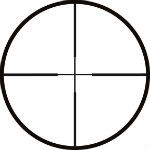
- Duplex or basic reticles. These are the most common on cheaper scopes and ones we would recommend getting if you've recently started using a scope on your rifle. It doesn't over-complicate things, while still making it easy to use.
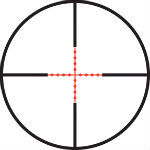
- Mid-dot reticles. This is a more advanced version of druplex reticle, which has dots on all sides that help you calculate the exact position for your crosshair before firing a shot. The markings are usually 1-mil apart and will be a hunter's best friend, primarily used by a large part of the hunting community.
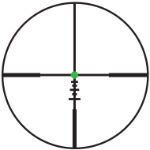
- Bullet-drop compensating (BDC) reticles. This is a slighly improved version of duplex reticle, which has markings (dots, lines or other elements) that help you compensate for range and adjust the bullet drop based on various distances. On most of the scopes one bar (horizontal line or dot) will represent 100 yards (roughly 95.1 meters)
There are additional more advanced reticle categories, but they also require a much more experienced shooter. You have scopes with markings to accommodate for bullet velocity, bullet strike and even windage.
5. Front focal plane vs second focal plane reticle
The reticles are also separated by something called focal plane. There are 2 types of scopes - front focal plane (FFP) or second focal plane (SFP) scopes. The primary differences between these 2 is that FFP has reticle in front of the lens, while SFP has it behind lens.
When using FFP scope, the crosshair size will adjust based on magnification changes that you make on it, while if you were to use SFP scope - the crosshair size will stay the same.
Most high powered and high magnification scopes are SFP, because otherwise increasing the magnification would make your crosshair take up too much space on the optic.
FFP provides you with a larnger image of a target, while FFP wouldm ake your target appear more evident. This is the primary factor that differenciates the two and which one you prefer to use will depend on personal preferance as well as the primary use of your scope.
6. Eye relief
The more magnification you have, the less light you tend to get to your sight. Some people think that if you keep your eyes closer to the scope - it will help you see the target much clearer, but keeping it too close will potentially cause damages to your eye.
Eye relief is the distance between your eye and the scope. Eye relief on most rifles is 4 inches, which gives you enough room not to be hit by your gun's recoil, while still allowing you to get great field of view through the scope. Higher recoilding guns, especially slug firearms, will need more eye relief to prevent the scope from hitting your eye due to recoil.
Every scope you purchase should have instructions on them and one of the areas that is usually discussed in there - eye relief for different caliber guns. We recommend you pay close attention to those.
Final comments
When it comes to selecting the best rifle scope for your personal needs - you need to consider how the scope will be used, your budget, magnification need eye relief and reticle choices. All of these will help you determine which scope will be the best for you.
Out of few dozen scopes we've used so far - Schmidt & Bender PM II has been our favourite, although it won't be for everyone. The scope is quite expensive and should be the perfect option for professionals, but if you're looking for quality beginner scope - you should consider Vortex Optics Strike Eagle.
Let us know what you think of this list. We do appreciate all comments and would like to get your feedback. Have you tried any of the models we've talked about or maybe have your own suggestions for models that should end up on this list? Feel free to share your comments below.

